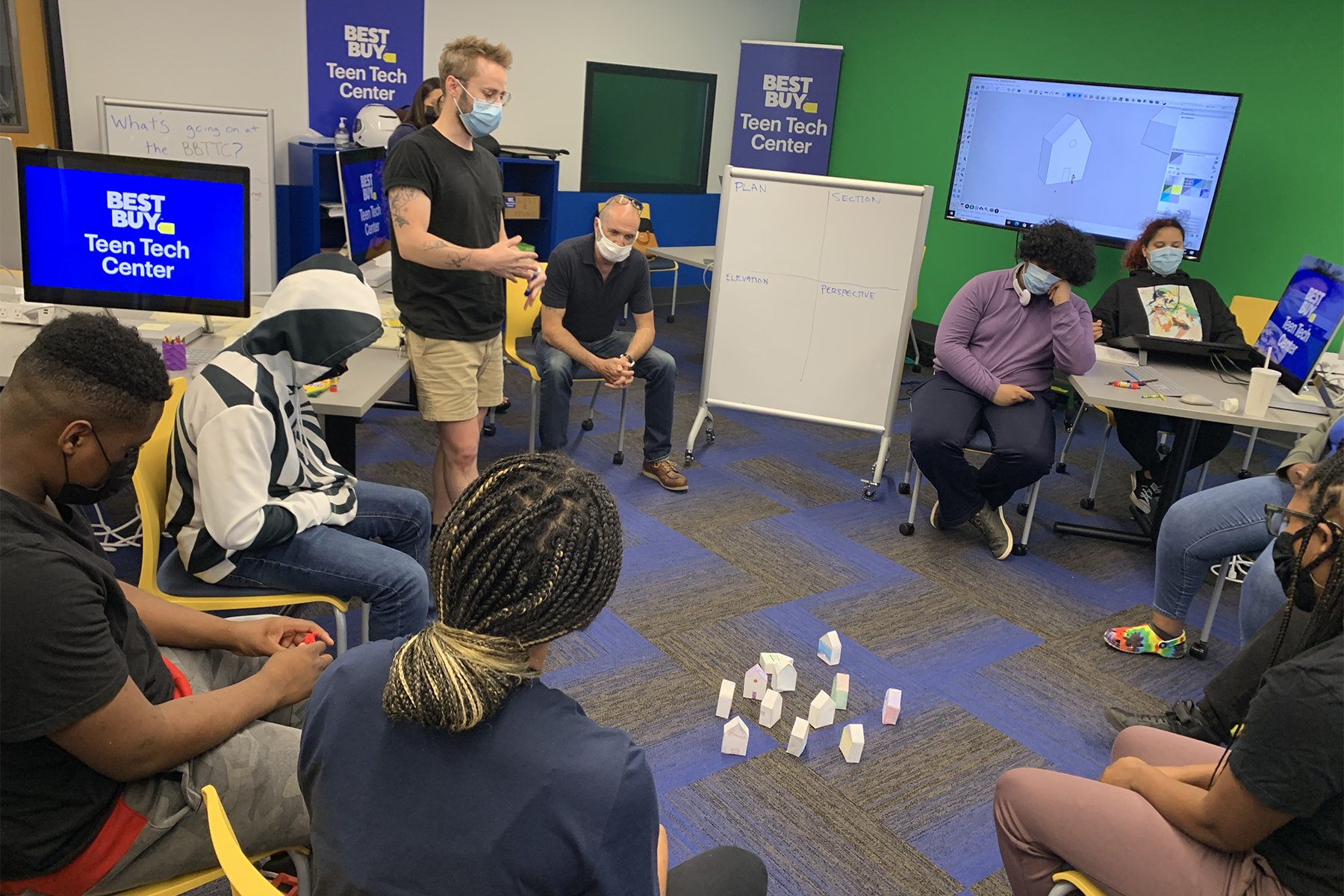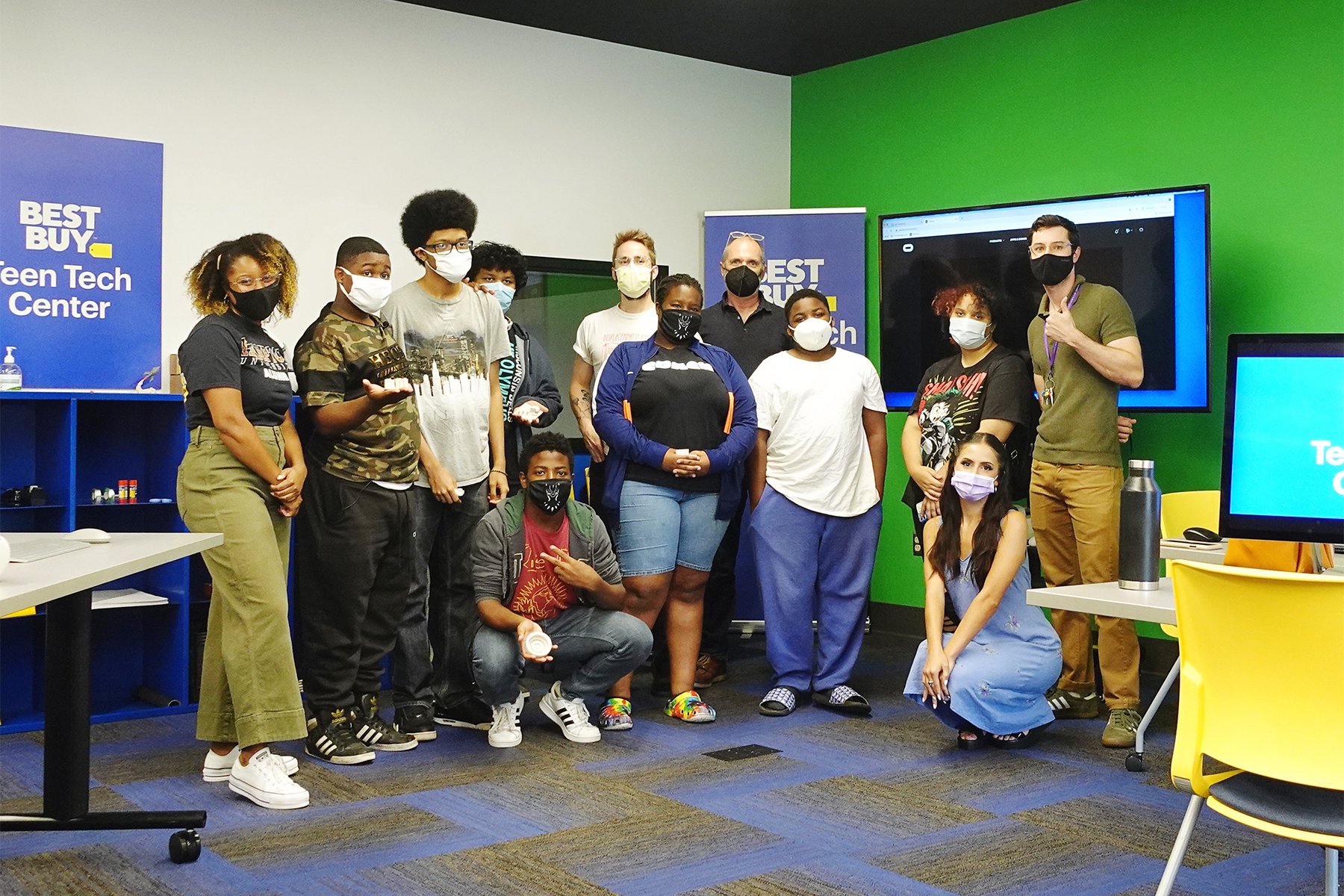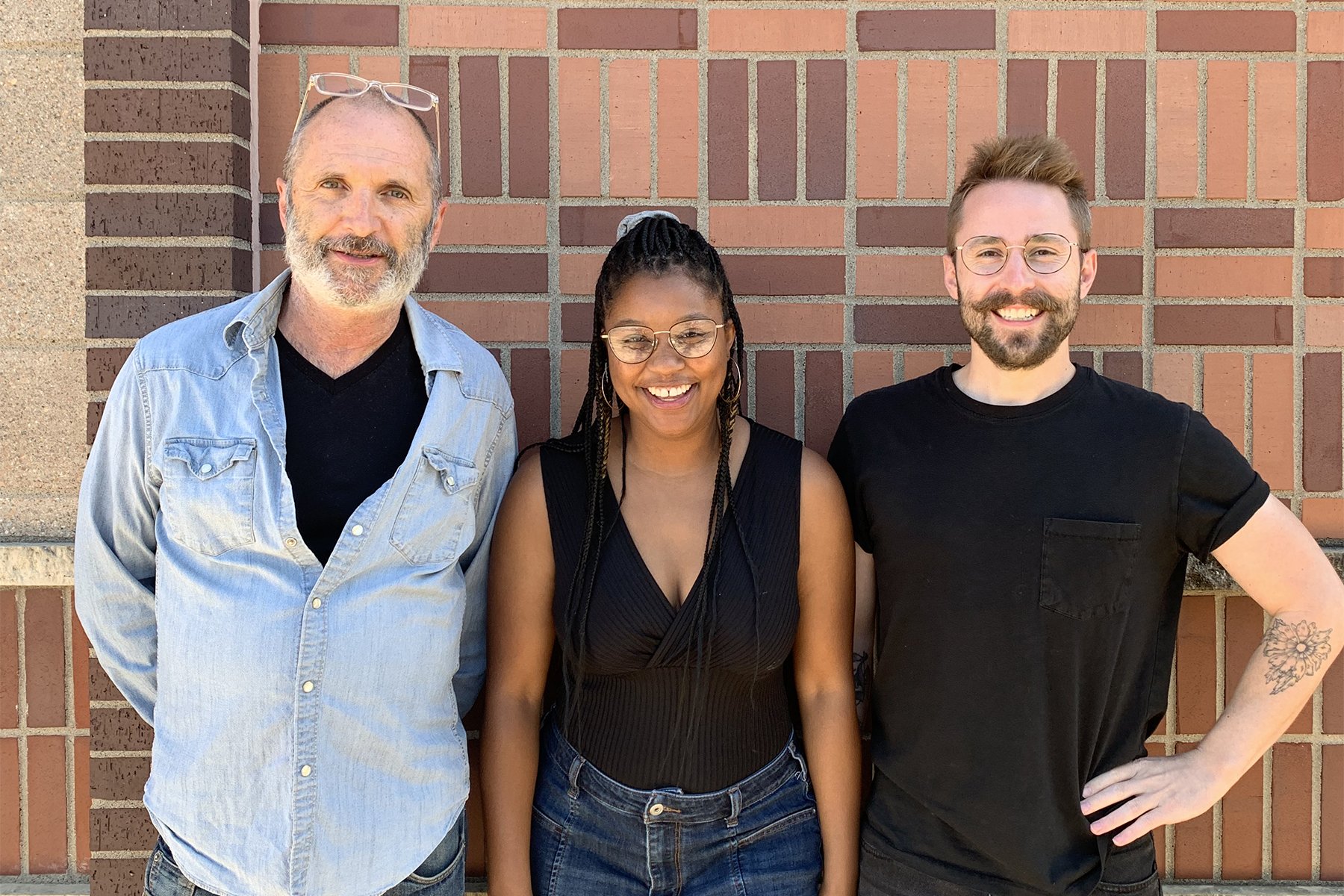An Architecture-Focused After-School Program Designed to Inspire
North Minneapolis students explore the tools and the place-making power of design in a new eight-week program from RSP Architects and Summit Academy OIC
By Anjali Ganapathy, Assoc. AIA | November 11, 2021
Design Studio participants don VR headsets in Week 1. Photo courtesy of Summit Academy OIC.
FEATURE
The course description for a new extracurricular program at Summit Academy OIC in North Minneapolis offers a tantalizing invitation to young teens: “We will be using and learning tools that are commonly seen in design practices, including hand drawing, SketchUp for 3D modelling, virtual and augmented reality apps, 3D printing and physical modelling, drone mapping technology, and more.” And the technology is only part of the fun: The instructors have thoughtfully crafted a series of activities designed to spark interest in a future career in architecture, particularly for BIPOC students.
Called the Design Studio, the eight-week program is the result of a partnership between RSP Architects, Summit Academy, Northside STEM, and Best Buy’s Teen Tech Center, which provides the students state-of-the-art laptops and access to technology for the duration of the course. RSP Architects pitched the studio to Summit Academy because career-exploration programs for high school students tend to focus on the trades, not design. RSP’s proposed approach to the program was a good match for the school’s mission to “assist individuals in developing their ability to earn and to become contributing citizens in their community.”
Images 1-3: The studio employs the spectrum of design tools, from paper models to the latest technology. Students and instructors take time out for a photo in the Best Buy Teen Tech Center. Instructors Derek McCallum, AIA, Sheldyn Merrell, and Sean Higgins, AIA. Photos courtesy of Summit Academy OIC.
“We want to extend thinking about architecture beyond just bricks and mortar,” says RSP principal Derek McCallum, AIA. “It’s creative problem solving, solving the social problem of the built environment. It’s making safe spaces, making places, and building communities.” The Design Studio encourages students to dream big for their communities and gives them exposure to the tools required to do that work.
Of course, to get middle school and high school students to dream big, you first need to hold their attention. The RSP instructors for the first studio—McCallum, Sean Higgins, AIA, Alex Berger, AIA, and Sheldyn Merrell—made the pedagogically astute decision to break each hour-and-a-half to two-hour session into smaller activity modules, often with snack breaks in between. Already in the first week, students don VR headsets to experience the power of immersive, high-tech design tools and are sent home with laptops installed with the latest design software. Each student who completes the studio receives a $100 stipend.
In the first Design Studio, the students’ final project was to design an icon for North Minneapolis that embodied the spirit of the community; in the course of that work, they learned how to develop a concept and model it in SketchUp and create a digital presentation.
Jalonda Combs, Summit Academy’s director of STEM programming, recruits students for the Design Studio in North Minneapolis and beyond, and Nich Thomas, Summit’s Teen Tech Center coordinator, irons out the program’s tech-heavy demands. The RSP team makes sure to balance all the tech with paper models, hand sketching, and photography; the goal is for students to build a design vocabulary and learn the lineage of the tools used by design professionals.
In addition to instruction from the RSP architects and designers, the students hear from guest speakers like 4RM+ULA architect Nathan Johnson, AIA, co-recipient of the AIA Minnesota Gold Medal. Not all of the activities are confined to the classroom: A Week 3 field trip led by James Wheeler, an instructor in the Dunwoody College of Technology architecture program, invites students to observe, photograph, and sketch their community with deeper attention to its patterns and experiential qualities. In the first Design Studio, this past summer, the students’ final project was to design an icon for North Minneapolis that embodied the spirit of the community; in the course of that work, they learned how to develop a concept and model it in SketchUp and create a digital presentation.
The students were encouraged to bring their own experience and interests to the project. One young rap artist was prompted to think about music and space, while another student designed a meditation center with a focus on healing traumatized youth. In the next studio, set for early 2022, the group will consider the concept of “building a bridge,” both literal and metaphorical, over Highway 55—a busy roadway that many a Summit Academy student has had to make a perilous dash across. McCallum hopes that the studio’s approach of centering design within the students’ own experience of the built environment will inspire some of the participants to consider a future in a design profession.
McCallum says that the students are surprised by what architects do, and that, around Week 4, “the light goes on.” And it isn’t only the students who experience an eye-opening moment. “The parents came to the last class and were tearful at how engaged their kids were,” says McCallum.
The RSP instructors see themselves as beneficiaries of the program, too. Younger staff, in particular, are energized by the idea of giving back to the community. “Being part of developing the Summit Design Studio is so important to me because it offers young minority students a chance to discover new possibilities for their future,” says RSP’s Sheldyn Merrell. “I’m honored to be a mentor that encourages them to dream, and that the dream is attainable.”




